How To Start A Sports Blog Free
Do you have the interest but feel like you don't know how to start a sports blog?
We can help. What follows is an action plan for someone interested in starting a blog or website on sports. Could you use this process to get up and running in another genre like cooking or home improvement? Sure, but this is specially tailored to the sports world.
Sports are a great American pastime. We play sports, we watch sports, and we talk about it – a lot. Some folks even have the desire to write about sports. One might desire to reach a bigger audience than just family and friends with their views on sports, teams, and players. The Internet and blogosphere provide that opportunity. Even if you're not a formally-trained sportswriter, you can gain an audience via your own sports blog.
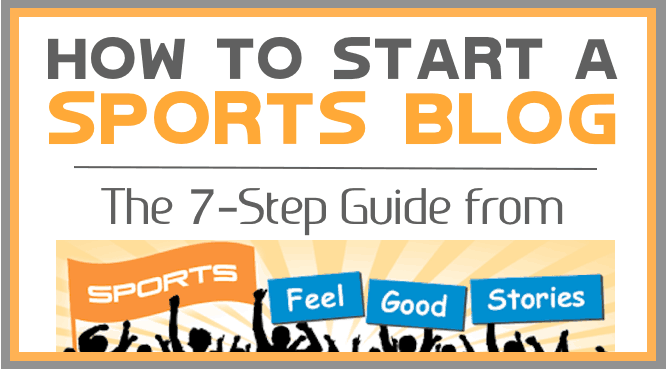
So, you might use this resource to get your site up and published and then revisit it to grow your audience and improve monetization. Here's the Sports Feel Good Stories 7-step beginner's guide for "How to Start a Sports Blog – UPDATED for 2021." If you're looking for info on how to start a sports website, you've come to the right place. Please read on.
Overview
Here are the steps you follow to start your own sports website.
1.) Determine your sports blog niche.
2.) Decide on your new site's name.
3.) Plan your first blog post and give thought to others.
4.) Set up your blog on a hosting service.
5.) Install WordPress (the recommended blogging platform) and decide on a theme.
6.) Complete the theme's set-up process.
7.) Perform basic site optimization.
BONUS: How to monetize your site.
1. Determine your sports blog niche
The core seven steps will get you up and running with your new sports website. However, many publishers want more than to have their sites just available to the public. They want to increase their audiences and increase revenue streams. For that reason, we've expanded the guide to include many more strategies, tips, and tactics to achieve those goals.
Imagine moving from sharing your sports insights with just your inner circle to having your views read by thousands of people, even millions. And, don't lose sight of the fact that successful sports blogs can create a revenue stream and even a significant business if they attract a big enough audience. Sports niches can lead to riches. Be creative.
But, how do you begin? How do you start a sports blog?
The best way to learn how to blog is to start a blog. Learn by doing.

Disclaimer
Before we get too far, I need to include this disclaimer.
Disclaimer: For some of the partners we recommend in this guide, Sports Feel Good Stories receives an affiliate commission (something you'll want to look into when examining ways to monetize your site). All of the products referenced are ones that we've used and endorsed.
If you're already set with your blogging plan, here's a link to enjoy 50% savings on a Bluehost hosting package.

My First Website: Sports Feel Good Stories
I started Sports Feel Good Stories 10 years ago. I wish I would've had a guide like this then. Sure, there were times when it was frustrating trying to get the site exactly how I wanted it to be (and there still are). But, many more times than that, I've been amazed at what can be done with just a few keystrokes because of all of the work that's been done and shared by others. A big thank you to those folks!
From free plugins to how-to guides on blogs, the information and resources are available for most anything if you're not afraid to research, explore and study. The level of sharing and support credence to the frequent use of the "blogging community" phrase.
If you're reading this post, you might already have an idea as to what you might write about. Maybe a popular sport or player has provided you with the inspiration. If you don't, start exploring online and see where your interests lie. And, if you're going to write about something regularly, it's best if it's something that you're inherently interested in. Second best, explore something you can develop an interest in. It helps to have a passion for your topic.
Much like advice to new writers, write about what you know. If you're a high school football coach, it's probably going to be easier to write about high school football than the NFL.

You can't out New York Times the New York Times
Narrow your focus to a topic that you can do justice to. It's hard to out-NY Times the NY Times for sports bloggers.
If you're one person writing, you can't cover everything in the same fashion that a daily newspaper does—narrow your focus with smaller circles. Maybe you reduce your focus to one sport, geographically, to one team, to one topic, or some specialty that sets you apart from other sites. An author's first effort shouldn't be a 26-book set of Encyclopedias. Bite off a manageable chunk that you're interested in, but that still has room to grow.
Complete a Competitive Assessment
When you've determined a niche that you like, complete a competitive assessment. Google and other search engines provide the tool to do that. Do some searches on words that describe your niche and see what other sports sites are out there. Maybe you'll find someone doing exactly what you were planning for your sports blog. Determine how your sports blog will be different from the competitive set.
2. Decide on your new site's name
If you haven't searched for a URL lately, you should know that finding the perfect domain name for your sports blog can be challenging. With a billion websites out there and more URLs than that gobbled up, it's easy to understand why. Many well-known names and phrases are gone. For that reason, try to come up with many ideas, and you may need to be flexible. You might not get your first choice for your sports blog. https://www.sportsfeelgoodstories.com/how-to-start-a-sports-blog/In fact, you might not get one of your top 10 choices. Be creative.
Some advice for your domain name choice
- Go with a .com name – it's the standard. Other endings like .net and .us present communication challenges because people are so used to .com names.
- Avoid dashes/hyphens in your URL.
- Obviousness is good. When people see your domain name, do they understand what the blog is about?
- Short URLs are highly valued. In addition, to be easier to remember, as a webmaster, you'll enjoy all of the strokes saved with a shorter name. (Ok, "do what I say, not what I do," – www.sportsfeelgoodstories.com)
- How does the URL look written down without spaces as you'll see it? Sometimes different word combinations create awkward new words or interpretations, e.g. Toms Hitters. Bounce your name off a few people and see what they think.
- Try to avoid words that have different spellings, e.g., principle and principal to avoid confusion.
- Is the name memorable? How does it sound? Could i be a popular sports blog name?
Name Considerations For Your Blog
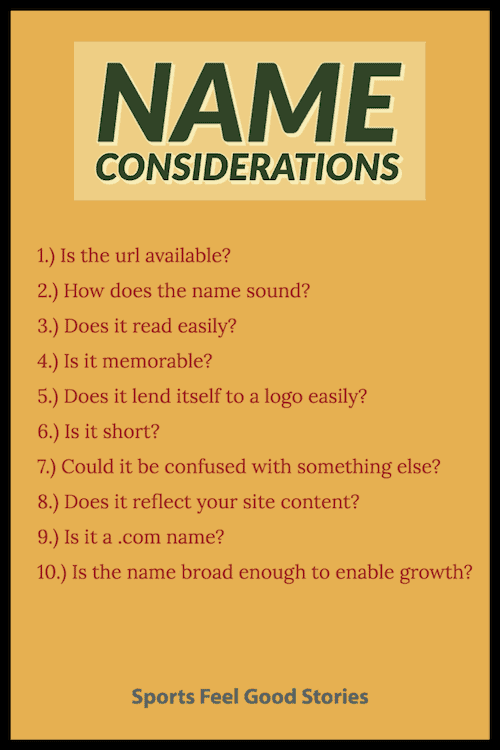
To check to see if your domain names are available, go to Bluehost and enter your options into their new domain checker.

3. Plan your first post and give thought to others
It's a good idea to begin thinking of an editorial calendar. Plan how frequently you're going to try to post a blog entry. It helps to have frequent entries in the early going, as you build up to a critical mass of content and cultivate an audience.
The general rule of thumb is that each entry should be a minimum of 300 words. Longer entries are great. But, sometimes, you may have exceptions. That's fine. Also, think about what visuals and videos you might use. Learn how to embed a YouTube video – it's pretty easy. Do a Google search on it if you don't know-how.
Create an Editorial Calendar
Your editorial calendar will help you plan your work and then work your plan. It needn't be too complicated, but as you grow, you might expand the columns of your worksheet. Down the road, your calendar might include things like writer assigned, Images needed, etc. But in the early going, simply committing to when you're going to create specific articles and matching them up to a weekly calendar will put you ahead of most new bloggers.
If you know the Super Bowl is played on February 7, 2021, the time to think about your great Super Bowl history article is not on February 1. To get ahead of schedule, plan for the time it takes for your search engine optimization to work. You'll want to be creating articles well in advance of when your viewers might be searching for them on Google or another web browser.

4. Set up your sports blog on a hosting service
Hosting is the rent you pay for the space your sports blog takes up on a server.
By setting up your sports blog on a hosting service, you pay a small monthly fee, but you have ownership of your domain and more control over your blog than going the "Free" route. Free sites are acceptable depending on your purpose, but some restrictions limit the growth of your site and the monetizing possibilities. By self-hosting, you can generate advertising revenue with many different options.
Note, we'll be suggesting you use WordPress.org, which can be loaded onto your hosted site free of charge. IMPORTANT: WordPress.org is not to be confused with WordPress.com – which has a free offering. Self-hosting is the way to go, and there are lots of options. The hosting site that we use on five of our sites and highly recommend is Bluehost.
Because of the number of folks we can send to Bluehost, we can offer 50% off or just $2.95 per month for the basic hosting package. Read all the details at Bluehost.
Why Bluehost? Longevity (they're not going to fold overnight), high level of service, dependability, and incredible prices!
One crucial tip on login and passwords: Use best practices for selecting your passwords. Make them long, use capital letters, use numbers, use special characters, and avoid common words and phrases.
Bluehost: Our Recommendation for Hosting
Bluehost offers different plans to accommodate various needs. Each package comes with a free domain name. It's easiest to buy your domain name where you plan on hosting. Otherwise, you have to transfer your domain name to the host site.
As a beginning blogger, it's probably best to go with the Starter Plan at Bluehost, the cheapest. Please note that your price will increase after the first year, but Bluehost's pricing is still excellent. Most importantly, they have excellent service. After extensive research, Sports Feel Good Stories decided on Bluehost when we decided to create a blog. We have five different blogs hosted at Bluehost.

As you're making your hosting purchase with Bluehost, you'll encounter this screen. You pay $19.99 per year more if you don't want your name and number on the domain registry published online. I don't usually pay for this additional convenience, but it's up to you.
You'll follow straightforward Bluehost instructions.

First, your account information,
Then Payment Information,

Then, choose a Password – make it longer (upper case, lower case, and specialty characters), not obvious, but the last four digits will be used by Bluehost when you call them – so make the last four digits very memorable.

When your password is accepted, you'll see this,
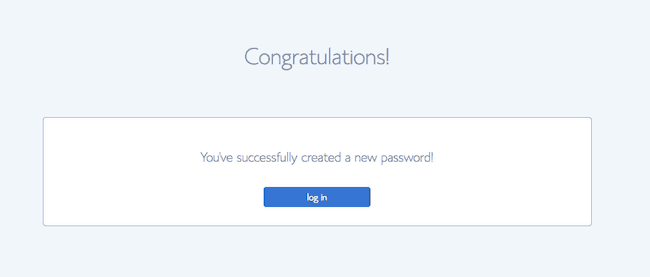
5. Install WordPress and decide on a theme
What Microsoft Word is to word processing software, WordPress is to blogs. It's easy to use, and it's great for SEO purposes.
UPDATE: Bluehost has taken the guesswork out of installing WordPress. They started the Bluerock experience back in August 2017. Upon creating a new hosting account, WordPress is now automatically installed for the customer by default.
After processing, you'll be allowed to select "Advanced Options." Do so. Name your site, e.g., Sports Feel Good Stories and then choose your admin username and password for WordPress. Write these down and label them accordingly. Whenever you log into WordPress to access your site, you'll need these.
You can pick a Theme from Bluehost's offerings or select your favorite from all of the options on the Internet. Your theme selection is pretty important as you'll be spending some time building pages and posts within the selected theme's structure. Do some research on the types of themes you like, and think through what you're trying to accomplish with your blog.
If you go the Bluehost route, here's what you'll see:
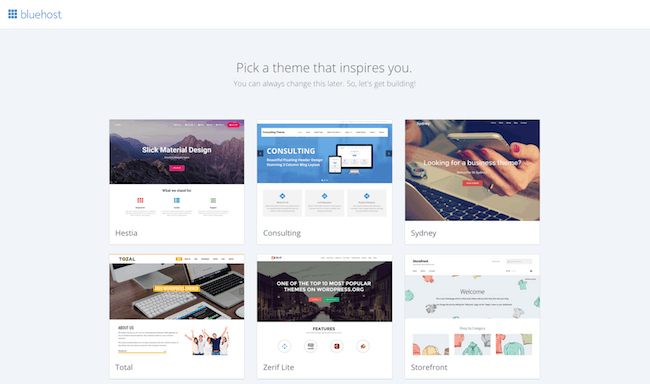
Logging into your site
With your successful installation, you can now go and log into your site.
From here, you'll see the WordPress dashboard interface — please note the navigational menu running vertically down the left-hand side of the page (This will become very familiar to you as you build your blog),

From here, you'll launch your site (click the blue button),
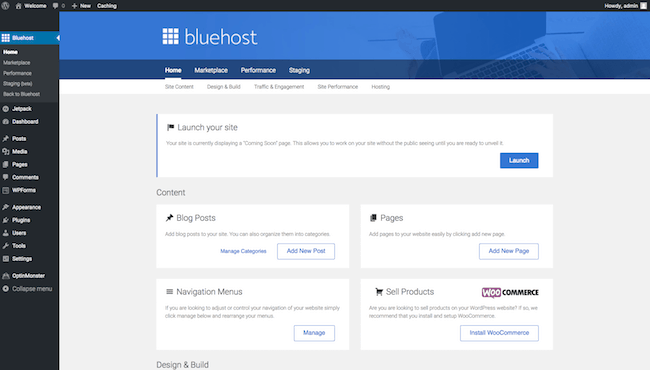
Fill in your site name and description,

After your initial set-up, it's generally easier to go directly to your site and add "/wp-admin" to the tail end of the URL to log in.
Go to: www.(your blog name)/wp-admin. Log in with your WordPress username and WordPress password. You'll go into the WordPress interface for your site. In the upper left-hand corner of your page, you should see your site's name. By placing the mouse over the name, you should see "Visit Site." Click on "Visit Site" to see what your site looks like at the moment.
Or, you can always access your blog via the Bluerock CPanel interface. Here's what that looks like,
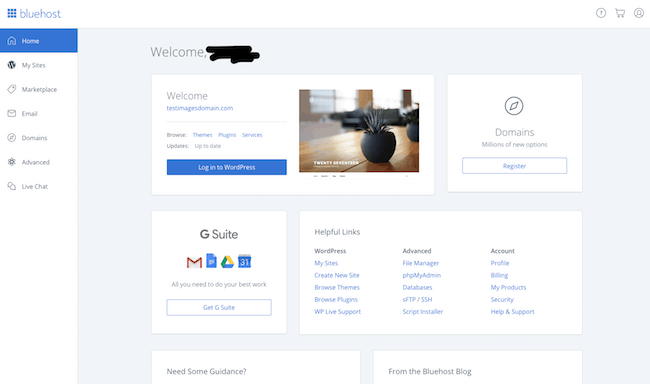
If you haven't added a Bluehost-provided theme, you can add your own. Go to the WordPress Interface dashboard, and down the left side, find Appearance > Themes > and click add a new theme.
Team Effort
Designers, art directors, and programmers work hard to create solutions that feature broad functionality and look great. Much thought goes into typography, location of visuals (above-the-fold or below), etc. Instead of starting from scratch and building up, get a jumpstart with a great theme. WordPress offers some free themes, but we highly recommend the Genesis Framework and StudioPress themes.
With so many folks accessing the Internet from their smartphones, picking a mobile responsive theme makes sense. At this Genesis Framework site, you can review the themes available by theme category, e.g., photography, business, etc., and by whether they're mobile-responsive or not. We highly recommend you use the middle filter to select "Mobile Responsive."
WordPress Themes for your Site
Sports Feel Good Stories has used the Lifestyle Pro WordPress theme in the past. WordPress themes range in price from about $59.95 to $99.95. I consider myself a frugal blogger. But, this was money well spent. You'll probably want to get the Genesis Framework parent theme ($59.95) and a child theme of your choice ($59.99 – $99.99). There's also a package deal where you have access to all of their WordPress themes.
Look hard at the different themes from a structure standpoint, including the number of visuals per page, positioning, size of visuals, etc. What will work best for what you have in mind for your sports blog? It's kind of like buying a house. The paint colors and rugs equate to images and can be changed easily. But, "the bones" or the construction of the theme are harder changes. Make sure to check out the theme in both desktop and mobile modes.
When you purchase from StudioPress, you'll like to get both the Genesis (parent theme) and a child theme, e.g., Lifestyle Pro. You'll upload both of these to your site from the Appearance >> Theme section of the vertical menu on your WordPress control panel.

6. Complete the theme's setup process
Each StudioPress theme comes with set-up instructions. Try to follow these very closely. If you run into challenges, use the forum. If you have questions, likely, others have too, and answers have already been documented. And, if that fails, use the Google search engine to try and find solutions. And if that fails, submit a ticket and wait for a response.
With some patience and critical thinking, getting your theme up and running is very achievable. Remember that for just about every function you'd like for your website to perform, there's probably a solution for you. The answer might be built into the theme or available via a WordPress plugin. Plugins are usually free of charge. Developers will ask for donations to support their efforts.
Take advantage of Free Plugins
Let's say you don't want your site to be seen while you're working on it—the solution: a "maintenance mode" plugin. Go to your plugin section on the WordPress control panel and click on Plugins New. Search Maintenance Mode. Review options and select one that you like. Install, activate and go to the settings of the plugin. The one potentially tricky thing about plugins: the settings can show up all over the place. Sometimes you can access them via the plugin area, while other times, they're only accessible via the vertical WordPress menu – frequently under settings (but not always). You'll have to look around.
Another plugin that you'll want to add right away is a "Contact Us" plugin. In the same process, go to Plugins>> New and search for "Contact Us." Before doing that, you might want to do a Google search on "Contact Us" plugins reviews to discover some recommended plugins. This part of creating your sports blog can take some time. When you are not making good progress, take a break and then come back to your work. Remember, there's a lot of folks who have gone through the same issues and challenges. It's doable.
7. Perform basic optimization
After completing the first six steps of "How to Start a Sports Blog," there are three things you should do right away so that your site can be easily found on the Internet.
a.) Install the plugin: WordPress SEO by Yoast. It's free. This is one of the most valuable plugins I've come across. When you have a chunk of time, dive into the SEO process early in your blogging venture. It will help you.
b.) Fill in your homepage title tag and meta description. It's free.
c.) Register your site with Google, Yahoo and Bing. It's free.
How to Build a Sports Site – Ongoing Work
SEO is an ongoing process, and many books and sites cover the topic. Don't underestimate its importance when you start a new sports blog. Google folks and the others who run search engines ultimately try to make the Internet an effective tool. Over the long haul, remember quality content is what will set your site apart from others. If someone tries to sell you on something that just doesn't seem right, it probably isn't. Use your good judgment.
Folks like to read websites with great content, are updated regularly, and are organized effectively. Plan on using your H1 – H6 tags. A general rule of thumb: use one H1 per page and multiple H2s and H3s based on your content topics and length. Don't force them.
The SEMRUSH Tool
One particularly effective tool that we use is the SEMRUSH tool. With SEMRUSH, you'll be able to:
- See what keywords are driving your competitors' traffic.
- Identify great keywords on both a number of searches per month basis and on how difficult it is to compete for a particular keyword basis.
- The tool also helps you identify problems with your site that are preventing pages from ranking high.
You need a robust tool like SEMRUSH if you're serious about search engine optimization (SEO). Click on the visual "try it now for free." Before signing up, I was a little reluctant because of the cash outlay. But, it's been one of the best investments in my website.
Understanding Keywords
Early in the process, understand what keywords are all about and how to write a headline that's interesting and uses keywords effectively. Keyword research will be critical to your success over time. Your Yoast SEO tool will help tremendously. Over time, you'll want to optimize your pages and posts as you add them.
Blogging Mistakes to Avoid When building your sports blog
- Using free hosting sites like WordPress.com — If you ever have hopes of selling products and making ad revenue from your site, you're going to want to own your site. You can do that with WordPress.org (note the .org). An independent web host enables you to own your content and advertise as you prefer – always playing within established rules.
- Choosing too broad of a subject matter — Better to select a niche and serve it well than to try to cover all sports all of the time.
- Spending too little time on crafting your post headlines — One of the most important things about your post is your headline. Spend time and get it right. Consider your headline's attention-grabbing potential, consider the SEO ramifications and choose wisely. "How to Start a Sports Blog" was chosen over "How to Start a Sports Website" because more people search for How to Start a Sports Blog.
- Not letting your personality shine — Finding your voice is important in writing. Don't try to be someone you're not. Open up to your readers where you can.
- Trying to design your own logo — Sometimes things are better left to professionals. Logo designs are one of them. Spend a few dollars and make it respectable.
- Not studying search engine optimization — Don't reinvent the wheel. Learn what works and what doesn't. SEO is key in building an audience.
- Not being opportunistic — Look for ways to stand out from the crowd on content, partnerships, approach, graphics, etc.
Bonus: How To Monetize Your Site
Making a significant amount of money from a website doesn't usually happen overnight. It requires time (for most people – think years, not weeks), good content, knowledge of search engine optimization (SEO), and persistence. You have to want it bad, be smart about it, and don't give up.
With that noted, it is possible to make some money relatively quickly. If you're selling your product on your site, you've got a jumpstart, and revenues can flow soon. But, if you're relying on advertising, affiliate links advertising (like Amazon), and marketing to your email list, it's a process. It might take several years to generate the audience size and monetization skills to make a living off your blog.
I'd compare the process of developing an audience and monetizing that audience to putting together a many-pieced and challenging puzzle. The early going is tough, and there isn't necessarily much light at the end of the tunnel. But, as you start putting some of the pieces together, improving your knowledge on various topics (from writing to SEO), the puzzle becomes easier.
If you've put together a puzzle recently, you know the easiest part is at the very end, where there are few pieces, and you can see pretty much how the puzzle will turn out. Well, that is where this comparison fails a bit. Because the process of staying up to speed with your website, the ongoing changes of Google's algorithm, and changes to the marketing environment require continuous learning. Yes, it will get easier. But, the learning doesn't stop.
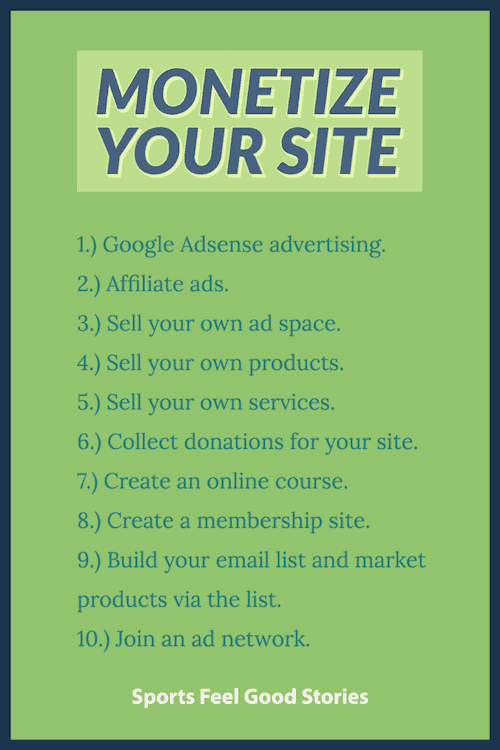
Google Adsense Advertising
Adsense is an advertising network created and run by Google. It's probably the most prevalent way to monetize a website. If you're receiving about 100 visitors to your site or more, Google Adsense can be added to create a revenue stream.
The ads that Adsense places on your website are tailored to your content. So, if you're writing about tennis, it's likely that many of the ads featured could show tennis balls, racquets, and tennis clothes.
The good news is that Adsense accepts a wide variety of blogs, and it's relatively simple to get up and run. Read through the Adsense information and give considerable thought about where to place your ads and how many ads to place on each page. Here's where you begin: Google Adsense Start.
Adsense is an excellent way to get up and monetize your website. As you continue to build your audience, at some point, it might make sense to venture out from Adsense and try to find an ad network that might pay more revenue per thousand visitors (RPM).
Affiliate Advertising
Affiliate advertising or marketing enables a website owner to quickly jump in and drive revenue by promoting other manufacturers and service providers' goods.
Here's how it works. You find a product or service that you like or want to write about, assess whether there's an affiliate program for it (search the product name and "affiliate program" on Google), and then sign up to be an affiliate partner. Some affiliate programs require a certain level of traffic, history, or brand appeal. So, you might not qualify for all products and services.
But if you do, you could write a review post of the product and include your affiliate link for your visitor. If your visitor purchases the promoted product, you earn a commission. Commissions might range from 10% to 70%. If you're able to sell a lot of products, you can make a lot of money. A few bloggers make over $500,000 per year from affiliate marketing.
Some affiliate networks you can investigate and see if they're a good fit for your website. Check out this affiliate program:
Clickbank — I've used this one with some pretty success.
Note: you can also approach some companies directly. Many tech companies have their affiliate programs outside of networks like the three mentioned above.
Sell Ads
Instead of or in addition to, you can sell your ads. Typically, if a blogger is attempting this monetization method, the webmaster will include an "Advertising" button on the main navigation menu of the home page.
The amount you can charge is totally up to you, but most advertisers will look at the number of monthly users or the number of monthly page views. This enables them to try to standardize and quantify fair values for their ads.
If you consider this approach, find some bloggers already offering their advertising and see how they do it. Many will provide an overview on their homepage, indicating sizes, perhaps pricing, and a means to contact the person responsible. Others will also include a media kit – usually a multi-page PDF – that tells the website's story, audience, and advertising benefits in greater detail. Bloggers will create programs that include mentions in their social media, e.g., Facebook, Twitter, and Instagram, to entice advertisers further.
CAVEAT: Be careful about any attempts from an advertiser who wants you to include a "do follow" link. Google frowns on the efforts of bloggers to sell links. Advertisers' content should be called out as sponsored in some fashion, and any link should be a "no follow' link.
Sell Your Own Products
This is one of my favorite ways to monetize.
Creating your products allows you to offer something unique on your site and gives visitors a reason to return specifically for your products. For Sports Feel Good Stories, I started by creating a basketball practice plans book. Sales started slowly, but sales began to rise a month or two before basketball season kicked off. Before I knew it, it was a significant contributor to my revenues for the year.
I struck deals with coaches of other sports who had enjoyed considerable success coaching young players to expand my offerings. I grew from just basketball to baseball, softball, football, and soccer practice plans books. Check out the Sports Feel Good Stories store to see the offerings.
Product Extensions
The practice plans were aimed primarily at adults – generally, moms and dads serving as volunteer coaches. They appreciated the fact that they could work with proven systems. A lot of the heavy lifting of practice planning was removed. I saw an opportunity also to reach young athletes via their parents. Starting with basketball, I worked with a co-author to develop an off-season training program for young basketball players.
Instead of attending an expensive camp, we systematically improved their games on their driveway hoop or at a local public park. As you might expect, sales have increased dramatically with people interested in staying close to home.
With a designer, we created a series of editable award certificates that coaches and team parents can recognize players at the end of the season. As the sports awards went over so big, we expanded the line to include themes like business, piano playing, and child achievement (beyond sports).
The Beauty of Digital Items
All of the products we sell on Sports Feel Good Stories are digital. What are the benefits? There's no worry about picking and packing and making it to the post office by a particular time. Also, and this is a big one, there are no inventory concerns. We don't have to invest in printing a big stack of books and worrying that they might not sell. Our most significant investment in digital items is our time.
On WordPress, there are plugins you can use to handle the store transaction. Most send the transaction through PayPal, which also accepts credit cards. There's some time to set up the system, but it should work going forward with little involvement from you if done correctly. You can generate sales and make money while you sleep. Who doesn't like that idea?
Market Your Own Services
Some folks create an additional stream of revenue by marketing themselves and their services. If you give inspirational speeches, perhaps your website can serve as the way for prospective buyers to find out about you. Or, maybe you want to add a revenue stream by helping others with professional writing or content creation? Or, if you're a designer, could you generate some logo design work based on folks liking your logo on your website?
There are a lot of options. Be creative.
If you can attract folks to your website, many might be interested in various services that you can provide.
Collect Donations For Your Site
If you provide a tremendous public service or have a strong and passionate group of followers, you might ask for donations. As a way to keep advertising to a minimum and for you to continue to provide this content, ask folks to make a small contribution.
The way I've seen many sites handle this is by asking visitors to buy them a cup of coffee ($5), but then also list higher amounts and a spot where visitors can customize the amount precisely to what they want to give. Again, there is likely a plugin or two to help you accomplish this task.
Create An Online Course
Everyone is an expert at something. If you have a specific skill set that others desire, there's a good chance you can monetize it. There are many sites devoted to helping you create an online course.
There are strategies to consider in pricing, marketing, and videotaping your classes. Many instructors offer a freemium in the form of a short class. By enticing you with their expertise, the hope is that you'll sign up for the complete course. Prices can go relatively high for highly-desired courses.
Your best resource is to do a Google search on the type of class you're interested in teaching. See how your content and qualifications match up to the competitive set.
Create A Membership Site
In addition to the free site that visitors access from a Google search or a link, some bloggers provide additional premium content to paid visitors. This valued information behind the wall holds value to some sports fans. If you think you can offer two levels of content, this might be a way to increase revenues from your biggest fans.
Again, look for a plugin to help you with the transaction and wall off the content to only paid subscribers.
Build Your Email List and Market To It
One of the most valued aspects of creating your website can be the list of names that you secure from it. You can use this list of names to regularly send emails to and market your various products and services.
You may be able to rent your list or advertise on your list to entice advertisers.
By creating relationships with your followers, you put yourself in a position to have a marketing list that you have control over. Unlike social media providers – think Facebook and Instagram – you have your say about how often and how you market to your list.
Join An Advertising Network
One of the best moves I ever made regarding Sports Feel Good Stories was joining the Adthrive Advertising Network. Adthrive indicated that most new publishers that joined up with them could increase their ad revenues by three times. They did that for Sports Feel Good Stories.
One of the huge advantages that came with Adthrive was the time savings. So, in addition to increasing my revenue in a big way, they also saved me time. Before, I interacted with advertisers and evaluated various deals. It was time-consuming. I had to do some due diligence to find out about the reputation of multiple firms and how reliable they were in delivering spam-free advertising code. With my newfound time savings, I focused more on content creation and other aspects of running a website.
Recap: How To Start A Sports Blog
So, there you have it: How to Start a Sports Blog. We hope we've provided some valuable information, from coming up with your sports blog name to monetizing your site.
You now have your blank slate. Go forth and write. Build an audience. Tell it like it is. Start a sports blog with style. Start a sports blog that lasts. Make a difference! If you go through this process of "How to Start a Sports Blog," we'd love to hear from you. If you have any suggestions for improving "How to Start a Sports Blog," please let us know. Thanks.
Further Reading
Lesson Learned from 10 Years of Blogging
Check out "Lessons Learned from 10 Years of Blogging." This is an excellent feature for both folks to consider whether to start publishing a site or for those who are current publishers.
Excerpt:
The best place to bury a dead body is page 2 of Google search results
I love this line, although I don't know who said it first.
For website publishers, here's what it means: create great content about topics you think your site can win. And by "win at," I mean to be on the first page of Google results, ideally, in one of the top 3 positions.
Things change a lot in Google searches, but not too long ago, if you were the #1 search result for a topic, you received about 1/3 of the click-throughs to your site. If you were #2, you got 1/5, and if you were #3, you received 1/10 of the clicks. So, if you add it up, 63% of clicks go to the first 3 listings on a Google search results page (33% + 20% + 10% = 63%).
So, you can see, it's a bit like the Olympics. The top three medalists make out with big paydays, and the others just competed.
Nice Work If You Can Get It – Benefits of Sports Publishing
And, you might enjoy our "Nice Work if You Can Get It – Benefits of Sports Publishing" feature. Learn why managing a website just might be your cup of tea.
Excerpt:
Pursue your passion
I get to follow and write about things that I'd follow even if I didn't have the site. I like football more than golf, so I write more about the NFL than the PGA. My focus is on sporting events that I want to watch. The NCAA Men's Basketball Tournament and Super Bowl get a fair amount of ink, and other events get no coverage. I can't cover it all, so I cover what I like.
And, on occasion, I take advantage of media passes for sporting events. It may take some time to generate enough traffic to your site to interest teams' media personnel, but the game experiences and access to players and coaches are great.
I've always liked sharing inspirational stories. In recounting them to my readers, I feel like my writing and storytelling have improved. And, there are always new challenges in this industry, like trying to stay at least even with technological advances.
By Mike O'Halloran
Mike is the founder and editor of Sports Feel Good Stories and Greeting Card Poet.
Overtime
You're on the How To Start A Sports Blog page.
Check out the Sports Feel Good Stories Store for offseason workout plans for baseball, basketball, football, softball, fitness, and coaching plans for baseball, basketball, soccer, softball, and award certificate makers.
You might also like:
How To Build a Website Audience
How To Start A Sports Blog Free
Source: https://www.sportsfeelgoodstories.com/how-to-start-a-sports-blog/
Posted by: blanfordhendis.blogspot.com

0 Response to "How To Start A Sports Blog Free"
Post a Comment